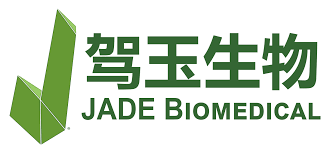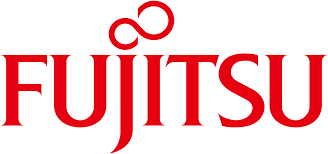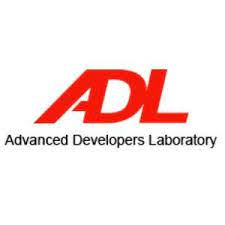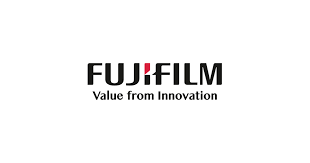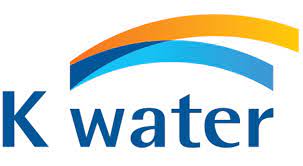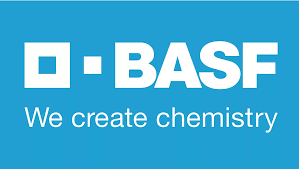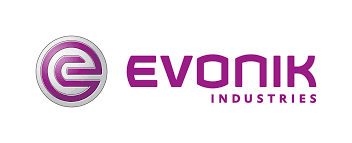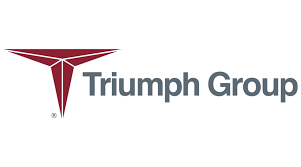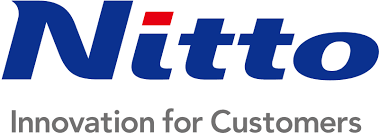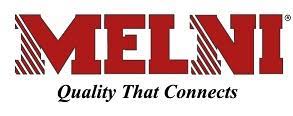Global Antimicrobial Resistance Surveillance Market Size, Share & Trends Analysis Report By End-user, By Region, and Segment Forecasts, 2023 - 2030
- Report Summary
- Table of Contents
- Segmentation
- Methodology
- Download Sample
Antimicrobial resistance (AMR) stands as one of the most urgent challenges in public health today. The global market for surveillance of antimicrobial resistance plays a pivotal role in addressing this issue. When microorganisms, including bacteria and viruses, develop resistance to the drugs meant to combat them, these medications become less effective or even entirely ineffective. The pressing need for robust surveillance systems has driven the growth of this market, allowing healthcare professionals to make well-informed decisions regarding antibiotic prescriptions and treatment strategies.
The global antimicrobial resistance surveillance market relies on advanced laboratory techniques, data analytics, and information sharing platforms. These tools facilitate the collection and analysis of data from healthcare facilities, laboratories, and clinics across the globe. This data-driven approach empowers healthcare stakeholders to identify emerging resistance patterns, develop targeted interventions, and create novel antimicrobial therapies. The primary drivers behind the market's growth are the substantial disease burden caused by pathogens like Streptococcus pneumonia, MRSA, C. difficile infections, and others, along with a notable increase in the occurrence of AMR infections. Furthermore, there is a growing demand for advanced diagnostic solutions to effectively address AMR, and the increasing regulatory approvals of diagnostic products are expected to further bolster market expansion.
However, the absence of standardized methods and guidelines for AMR surveillance can hinder the comparability and interoperability of data among different regions and countries. This lack of standardization presents a challenge in establishing a cohesive global surveillance network.
Global Antimicrobial Resistance Surveillance market was valued US$ 5.6 Bn in 2022 and is expected to reach ~US$ 9.9 Bn by 2032, growing at a CAGR of 5.8% during the forecast period 2023-2032.
The Antimicrobial Resistance Surveillance market expansion is fuelled by several factors, including the increasing incidence of infections caused by drug-resistant pathogens, advancements in diagnostic technologies, and the rising concern over antimicrobial resistance, government initiatives aimed at tackling antimicrobial-resistant species, and the emergence of multi-drug resistance due to substance abuse. Conversely, the high expenses associated with antimicrobial resistance diagnostic systems and kits are constraining the market's growth.
COVID -19 Impact
The antimicrobial resistance surveillance market has been significantly affected by the COVID-19 pandemic. On one hand, the pandemic has resulted in an uptick in AMR cases due to the excessive use of antimicrobials for treating COVID-19 patients and preventing secondary infections. Conversely, it has disrupted AMR surveillance efforts due to resource limitations and shortages in personnel.
The COVID-19 pandemic has prompted a surge in the utilization of antimicrobials, such as antibiotics and antifungals, within healthcare facilities and hospitals. This surge is primarily driven by the necessity to treat COVID-19 patients and reduce the risk of secondary infections. However, the excessive use of antimicrobials can foster the development of AMR, wherein bacteria, viruses, fungi, and parasites become resistant to the medications intended to combat them.
Effective AMR surveillance is crucial for monitoring AMR spread and devising strategies to combat it. Nonetheless, the COVID-19 pandemic has disrupted AMR surveillance efforts in numerous countries. This disruption can be attributed to various factors, including resource constraints, shortages of personnel, and the need to prioritize COVID-19 response activities.
Despite the challenges posed by the COVID-19 pandemic, the AMR surveillance market is anticipated to expand in the upcoming years. This is due to several factors, including the increasing prevalence of AMR, heightened awareness of the threat posed by AMR, and greater investments made by governments and other stakeholders in AMR surveillance and control programs.
Factors Driving the Antimicrobial Resistance Surveillance Market
Drivers
Rising Threat of Antimicrobial Resistance
The escalating menace of antimicrobial resistance is poised to drive market expansion. For instance, as per the CDC, approximately 2.8 million AMR cases are reported annually in the United States. Furthermore, the United States Pharmacopeial Convention reports that globally, AMR is responsible for approximately 700,000 deaths each year, a number that could surge to 10 million annually by 2050 if the diagnosis and treatment of microbial infections are not effectively managed.
Governments worldwide are actively working to enhance diagnostic accuracy for precise point-of-care diagnosis. In the pursuit of developing innovative point-of-care diagnostic solutions, the United Kingdom government has taken steps to incentivize research and development in the field of antimicrobial resistance diagnostics. By 2024, the government aims to bridge research and development gaps, collaborate with global stakeholders to create rapid and next-generation diagnostic tests, and promote research initiatives in the field of AMR diagnostics. Additionally, in February 2020, the United Kingdom allocated approximately USD 12 million in partnership with Nigeria to address the escalating threat of drug-resistant infections. This partnership is focused on upgrading laboratory equipment, enhancing public health surveillance systems, and providing training to scientists and technicians.
Challenges
High Cost of Antimicrobial Resistance Diagnostic System
AMR imposes a significant economic burden. In addition to the human cost in terms of lives lost and health complications, it leads to prolonged illnesses, extended hospital stays, increased reliance on more expensive medications, and financial hardships for those affected. Furthermore, the pricing of AMR kits and equipment is positioned at a premium level. According to findings from the North Shore University Health System, the annual cost of reagents for automated systems, with a testing volume of 29,200 tests per year, amounts to US$ 165,856, compared to just US$ 43,508 per year for the disk diffusion method. Additionally, the use of automated systems results in an additional expenditure of US$ 90,668 per year compared to the semi-automated disk diffusion method.
Academic research laboratories typically lack the financial means to acquire such systems due to their constrained budgets. Moreover, the associated maintenance expenses and various other indirect costs contribute to an overall rise in the total ownership expenses of these instruments. These factors pose obstacles to the widespread adoption of antimicrobial resistance surveillance systems.
Antimicrobial Resistance Surveillance Market Segmentation
By Type
The worldwide antimicrobial resistance surveillance market comprises four main segments: kits, systems, surveillance software, and services. In 2022, the kits segment played a substantial role in the global antimicrobial resistance surveillance market. These kits encompass diagnostic reagents and consumables utilized in laboratories for the detection and identification of antimicrobial-resistant pathogens. They are essential for conducting microbiological assessments aimed at determining the resistance characteristics of infectious agents. Examples of such kits include culture media, antibiotic susceptibility testing (AST) panels, and molecular testing reagents.
By Application
The application segment of the antimicrobial resistance surveillance market is sub-segmented into clinical diagnostics, public health surveillance and other applications. In clinical diagnostics, the study includes surveillance tools that are used within healthcare facilities to monitor the resistance patterns of infectious agents. This includes hospitals, clinics, and laboratories where quick identification of drug-resistant strains is crucial for patient treatment. In public health surveillance, the market study focuses on data that is used to formulate guidelines, policies, and public health strategies to combat and manage the spread of resistant microbes.
By End-User
Regarding the end-user breakdown, the Antimicrobial Resistance Surveillance market is categorized into hospitals & clinics, research & academic institutions and others.
The hospital segment, with its robust market presence, held a commanding share of 45% in revenue in 2022. This dominance can be attributed to several factors, including the rising incidence of hospital-acquired infections, a surge in hospital admissions due to the prevalence of AMR infections, prolonged hospitalizations, and increased accessibility to advanced diagnostic technologies, affordability, and improved healthcare coverage. Additionally, pathogenic infections such as MRSA, CDI, and DRSP have the potential to cause severe conditions like bloodstream infections, sepsis, pneumonia, and surgical site infections. Therefore, the elevated occurrence of pathogen-related disorders within hospital settings further bolsters the growth of this segment. Furthermore, a study conducted by BD, Pfizer, and Merck in April 2022 revealed that over 270 hospitals in the United States reported an increase in antimicrobial resistance during the COVID-19 pandemic.
Conversely, the diagnostic laboratories segment is expected to experience the most rapid growth in the upcoming years. This trajectory is underpinned by the growing burden of infectious diseases and advancements in laboratory technologies. Additionally, the availability of affordable services and the widespread presence of laboratories conducting a multitude of diagnostic procedures are anticipated to drive market expansion. Laboratory testing plays a crucial role in patient treatment, helps in monitoring emerging threats, and provides precise results for effective treatment decisions. The CDC has initiated its AR laboratory network to enable swift resistance diagnosis and to inform local authorities for concerted efforts in combating its spread.
By Regions
By region, the market is divided into North America, Europe, APAC, and Others. Others is further divided into Middle East and South America. Emerging economies are poised to emerge as key growth hubs for the Antimicrobial Resistance Surveillance market. The Asia Pacific, Middle East, and Latin America regions represent relatively untapped markets for companies, especially when compared to the well-established markets of Europe and North America. Notably, Russia, India, China, Brazil, and South Africa play significant roles in the increased adoption of antibiotics, contributing to a substantial 76% rise in antibiotic usage. The noteworthy shifts in antibiotic utilization over the past decade are primarily attributed to the emergence of new diseases.
In 2019-20, a funding of approximately US$ 3.3 million was allocated through the Russian Federation-supported FAO initiative. This funding was directed towards assisting national authorities in Armenia, Belarus, Kazakhstan, Kyrgyzstan, and Tajikistan in addressing the threats posed by antibiotic-resistant microorganisms within agriculture and food systems.
North America boasts well-established healthcare systems and state-of-the-art laboratory facilities, encompassing countries like the United States and Canada. These nations allocate substantial resources to antimicrobial resistance (AMR) surveillance, with a particular focus on clinical diagnostics and meticulous data gathering. Given the region's robust healthcare infrastructure and elevated standards of patient care, clinical diagnostics have commanded a significant share in North America. In the United States, the Centres for Disease Control and Prevention (CDC) spearhead AMR surveillance efforts.
Meanwhile, in the projected period ahead, the Asia Pacific region is expected to witness the swiftest growth rate in the global antimicrobial resistance surveillance market. China, in particular, has made noteworthy investments in AMR surveillance, including the establishment of a national data collection network. Moreover, the Asia-Pacific area collaborates with international organizations like the World Health Organization (WHO). Due to its diverse healthcare systems and varying population sizes, the Asia-Pacific region, encompassing countries such as China and India, faces distinctive challenges. This region is witnessing a surge in public health surveillance, driven by both regional and global health organizations and initiatives.
Competitive Landscape of Antimicrobial Resistance Surveillance Market
The antimicrobial resistance surveillance market is characterized by several key players and a dynamic environment driven by technological advancements, collaborations, and strategic initiatives. Key market players are adopting strategies such as new product development, merger & acquisition, and partnership to increase their market share. Established companies such as bioMérieux, BD (Becton, Dickinson and Company), Thermo Fisher Scientific, Roche Diagnostics, and Danaher Corporation are key players in the AMR surveillance market. They have a strong presence and offer a wide range of AMR surveillance products and services. Innovative start-ups are entering the market with novel diagnostic technologies, data analytics solutions, and point-of-care testing devices. These companies often focus on specific niches within AMR surveillance and may disrupt traditional players.
Recent Developments
- In July 2022, Boehringer Ingelheim, bioMérieux, and Evotec SE jointly announced the establishment of a venture to develop actionable diagnostics and the next generation of antibiotics, with the objective of reducing the burden of antimicrobial resistance. Within this joint venture, bioMerieux will focus on developing testing solutions for antibiotic resistance, allocating a significant portion, 80%, of the total investment toward the fight against AMR.
- In April 2022, bioMerieux unveiled its acquisition agreement with Specific Diagnostics. This strategic move has bolstered its standing in the worldwide market for antimicrobial resistance diagnostics.
- In January 2022, BD unveiled a partnership with Pfizer Inc. and a global charitable foundation, Wellcome, with the goal of advancing knowledge in diagnostics and testing solutions to enhance antimicrobial stewardship practices worldwide. This collaborative effort aims to assess existing testing practices, gaining insights into both the shortcomings and advantages of antimicrobial resistance diagnostic procedures.
- In September 2021, MeMed disclosed that its MeMed BV diagnostic test received 510(k) clearance from the U.S. FDA. This test is designed for discerning between bacterial and viral infections in point-of-care environments.
- In October 2021, Hologic, Inc introduced the fully automated Novodiag molecular diagnostic solution by Mobidiag Oy in Europe, offering on-demand testing for antimicrobial resistance and infectious diseases. The Novodiag system combines microarray and real-time PCR capabilities, enabling the identification of multiple pathogens from a single sample.
- In October 2021, OpGen, Inc. disclosed that it had received 510(k) clearance from the U.S. FDA to market the Acuitas AMR Gene Panel. This panel is capable of testing 28 genetic antimicrobial resistance markers across various pathogens and will assist healthcare professionals in managing patients with antibiotic-resistant bacterial infections.
Table of Contents
- Executive summary
- MARKET INTRODUCTION
- MARKET SCOPE
- MARKET Definitions
- research methodology
- market outlook
- Key Trends
- GUIDELINES / REGULATIONS
- COVID-19 IMPACT ON GLOBAL Antimicrobial Resistance Surveillance MARKET
- MARKET DYNAMICS
- Drivers
- Rising threat of antimicrobial resistance
- Growing prevalence of infections caused by drug-resistance pathogens
- Restraints
- Strict regulations in research
- Opportunities
- Growth of emerging economies
- Challenges
- High cost of antimicrobial resistance diagnostic system
- PriCing Analysis
- PORTER’S FIVE FORCE MODEL
- Threat of new entrants
- Threat of substitute
- Bargaining power of suppliers
- Bargaining power of buyers
- Intensity of competitive rivalry
- Drivers
- GLOBAL ANTIMICROBIAL RESISTANCE SURVEILLANCE MARKET, By TYPE, MARKET ESTIMATION AND FORECAST, 2022-2032), value (USD million)
- INTRODUCTION
- MARKET SHARE ANALYSIS
- kits
- systems
- surveillance software
- services
- GLOBAL ANTIMICROBIAL RESISTANCE SURVEILLANCE MARKET, By APPLICATION, MARKET ESTIMATION AND FORECAST, 2022-2032), value (USD million)
- INTRODUCTION
- MARKET SHARE ANALYSIS
- Clinical Diagnostics
- Public health surveillance
- other applications
- GLOBAL ANTIMICROBIAL RESISTANCE SURVEILLANCE MARKET, By END USER, MARKET ESTIMATION AND FORECAST, 2022-2032), value (USD million)
- INTRODUCTION
- MARKET SHARE ANALYSIS
- hospitals & clinics
- research & academic institutions
- others
- GLOBAL ANTIMICROBIAL RESISTANCE SURVEILLANCE MARKET, REGIONAL ANALYSIS MARKET ESTIMATION AND FORECAST, 2022-2032, value (USD million)
- INTRODUCTION
- NORTH AMERICA ANTIMICROBIAL RESISTANCE SURVEILLANCE MARKET
- North America Antimicrobial Resistance Surveillance Market, By Country
- US
- Canada
- Mexico
- North America Antimicrobial Resistance Surveillance Market, By Type
- North America Antimicrobial Resistance Surveillance Market, By Application
- North America Antimicrobial Resistance Surveillance Market, By End-User
- North America Antimicrobial Resistance Surveillance Market, By Country
- EUROPE ANTIMICROBIAL RESISTANCE SURVEILLANCE MARKET
- Europe Antimicrobial Resistance Surveillance Market, By Country
- Germany
- UK
- France
- Italy
- Spain
- Russia
- Rest of Europe
- Europe Antimicrobial Resistance Surveillance Market, By Type
- Europe Antimicrobial Resistance Surveillance Market, By Application
- Europe Antimicrobial Resistance Surveillance Market, By End-User
- Europe Antimicrobial Resistance Surveillance Market, By Country
- ASIA PACIFIC ANTIMICROBIAL RESISTANCE SURVEILLANCE MARKET
- Asia Pacific Antimicrobial Resistance Surveillance Market, By Country
- China
- Japan
- India
- Australia
- Singapore
- South Korea
- Thailand
- Indonesia
- Malaysia
- Philippines
- Rest of Asia Pacific
- Asia Pacific Antimicrobial Resistance Surveillance Market, By Type
- Asia Pacific Antimicrobial Resistance Surveillance Market, By Application
- Asia Pacific Antimicrobial Resistance Surveillance Market, By End-User
- Asia Pacific Antimicrobial Resistance Surveillance Market, By Country
- MIDDLE EAST & AFRICA ANTIMICROBIAL RESISTANCE SURVEILLANCE MARKET
- Middle East & Africa Antimicrobial Resistance Surveillance Market, By Country
- UAE
- Saudi Arabia
- South Africa
- Rest of Middle East & Africa
- Middle East & Africa Antimicrobial Resistance Surveillance Market, By Type
- Middle East & Africa Antimicrobial Resistance Surveillance Market, By Application
- Middle East & Africa Antimicrobial Resistance Surveillance Market, By End-User
- Middle East & Africa Antimicrobial Resistance Surveillance Market, By Country
- SOUTH AMERICA ANTIMICROBIAL RESISTANCE SURVEILLANCE MARKET
- South America Antimicrobial Resistance Surveillance Market, By Country
- Brazil
- Argentina
- Peru
- Rest of South America
- South America Antimicrobial Resistance Surveillance Market, By Type
- South America Antimicrobial Resistance Surveillance Market, By Application
- South America Antimicrobial Resistance Surveillance Market, By End-User
- South America Antimicrobial Resistance Surveillance Market, By Country
- GLOBAL ANTIMICROBIAL RESISTANCE SURVEILLANCE MARKET, COMPETITIVE Intelligence
- COMPETITIVE POSITIONING
- competitor benchmarking
- Competitive Quadrant
- market share analysis, 2022 (%)
- GLOBAL ANTIMICROBIAL RESISTANCE SURVEILLANCE MARKET, COMPANY ANALYSIS
- Axenis S.A.S
- Company Overview
- Business outlook
- Headquarter
- Established/Incorporated
- Headcounts/ Employee strength
- Financial Overview
- Sales/revenue
- R&D expenditure
- Business segment sales share
- Regional sales share
- Product Offerings
- SWOT Analysis
- Key Developments (Expansion/New Product Development/Agreement/Mergers & Acquisitions, Partnership/Investment/Etc.)
- Company Overview
- Champions Oncology Inc.
- charles river laboratories
- Crown Bioscience Inc.
- Genoway S.A.
- harbour antibodies BV
- Hera biolabs
- Horizon Discovery Group PLC
- HuMurine Technologies
- Ingenious Targeting Laboratory
- inotiv
- oncodesign
- pharmatest services
- Taconic Biosciences Inc.
- The Jackson Laboratory
- Trans Genic Inc.
- Vitalstar Biotechnology Co. Ltd.
- OTHERS
- Axenis S.A.S
*Financials and Details May Not be Included in Case of Privately Held Company
Global Antimicrobial Resistance Surveillance Market Segmentation
Antimicrobial Resistance Surveillance by Solution: Market Size & Forecast 2023-2030
- Diagnostic Kits
- Diagnostic Systems
- Surveillance Software
- Services
Antimicrobial Resistance Surveillance by Application: Market Size & Forecast 2023-2030
- Clinical Diagnostics
- Public Health Surveillance
- Veterinary Diagnostics
- Environmental Monitoring
Antimicrobial Resistance Surveillance by Technology: Market Size & Forecast 2023-2030
- Conventional methods
- Molecular diagnostics
- Next-generation sequencing (NGS)
- Data analytics
Antimicrobial Resistance Surveillance by End User: Market Size & Forecast 2023-2030
- Hospitals & Clinics
- Public Health Agencies
- Veterinary Laboratories
- Research Laboratories
- Pharmaceutical Companies
Antimicrobial Resistance Surveillance by Geography: Market Size & Forecast 2023-2030
- North America (USA, Canada, Mexico)
- Europe (Germany, UK, France, Russia, Italy, Rest of Europe)
- Asia-Pacific (China, Japan, South Korea, India, Southeast Asia, Rest of Asia-Pacific)
- South America (Brazil, Argentina, Columbia, Rest of South America)
- Middle East and Africa (Saudi Arabia, UAE, Egypt, Nigeria, South Africa, Rest of MEA)
Major Players:
- BD (Becton, Dickinson and Company)
- bioMérieux SA
- Thermo Fisher Scientific Inc.
- Roche Diagnostics International Ltd.
- Danaher Corporation
- Siemens Healthineers AG
- Abbott Laboratories
- Accelerate Diagnostics, Inc.
- Agilent Technologies, Inc.
- Bruker Corporation
- Hologic, Inc.
- Qiagen N.V.
- Bio-Rad Laboratories, Inc.
- Hoffmann-La Roche Ltd.
- bioMérieux SA
- GenMark Diagnostics, Inc.
- Luminex Corporation
- Q-Linea AB
- Curetis N.V. (OPGen, Inc.)
- BioFire Diagnostics, LLC (bioMérieux SA)
- Cepheid (a Danaher company)
- BioFire Diagnostics, LLC
- PathoQuest S.A.
- Bacterial Barcodes Inc. (Abbott Laboratories)
- Karius, Inc.


